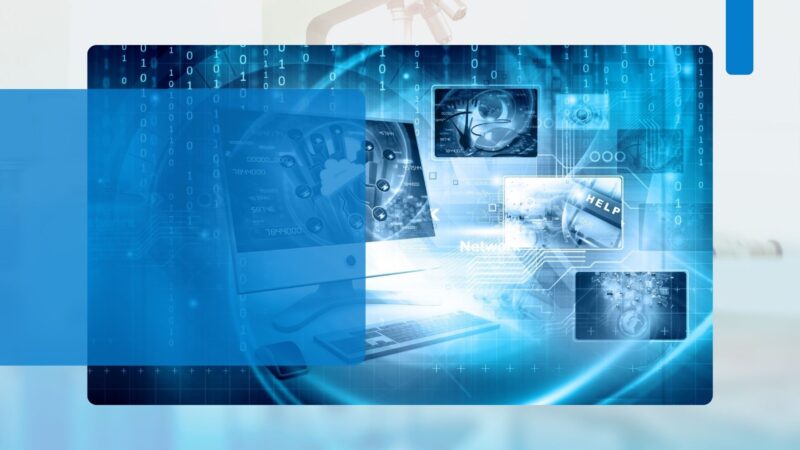A Digital Twin is a virtual replica of a physical system that mirrors real-world processes, assets, or environments in real time using data and simulation models. In pharmaceutical manufacturing, digital twins are revolutionizing the way companies design, operate, and optimize their production processes, ensuring better compliance, efficiency, and product quality.
Digital Twin in Pharma – Simple Explanation (Layman’s Terms)
Imagine you have a virtual copy of a pharma plant on your computer—a copy that behaves exactly like the real one. Every machine, every sensor, every process in the physical plant has a counterpart in the digital world. You can see what’s happening in real-time, test changes without risk, predict problems before they happen, and improve efficiency—all without touching the real facility.
It’s like a flight simulator, but for your manufacturing line.
Why is Digital Twin Important for Pharma?
Pharma manufacturing is:
- Highly regulated (GMP, FDA, EMA)
- Sensitive to small variations in process conditions
- Dependent on batch quality, equipment reliability, and process repeatability
A digital twin allows pharma companies to:
- Predict outcomes (e.g., product quality)
- Prevent issues (e.g., contamination, breakdowns)
- Optimize processes (e.g., reduce batch time, save energy)
- Accelerate tech transfer and scale-up
- Enable real-time release testing (RTRT) and continuous manufacturing
Key Components of a Digital Twin System
| Component | Description |
| Physical Asset | Machines, production lines, equipment, or even entire plants |
| Data Layer | Real-time data from sensors (temperature, flow, pressure, pH, etc.) |
| Simulation Model | Mathematical and physics-based models that mimic the real process |
| Analytics Engine | AI, ML, and statistical tools for prediction, optimization, and insights |
| Visualization Interface | Dashboards, 3D representations, and process diagrams for human operators |
How Is Digital Twin Implemented in Pharma Manufacturing?
1. Asset/Process Selection
- Start with critical unit operations (e.g., granulation, blending, tablet compression)
- Or focus on high-value processes (e.g., biologics, aseptic filling)
2. Sensorization and Data Infrastructure
- Equip equipment with IoT sensors
- Use OPC-UA, SCADA, or DCS for data acquisition
- Ensure data integrity (ALCOA+ principles)
3. Model Development
- Use first-principle models (physics, chemistry) and data-driven models (AI/ML)
- Model behavior of the process under different conditions
4. Real-Time Integration
- Sync physical and digital systems through edge computing or cloud platforms
- Create bi-directional data flows
5. Validation
- Validate model accuracy against actual plant behavior (GAMP 5 compliant)
- Use Design of Experiments (DoE) and PAT (Process Analytical Technology) data
6. Deployment
- Connect the twin to MES, LIMS, or ERP for integrated decision-making
- Enable what-if analysis, predictive maintenance, and automated control
7. Feedback and Continuous Learning
- Use outcomes to refine the model
- Implement adaptive learning to improve precision over time
Digital Twin Real-World Use Cases
| Application | Description |
| Batch Process Simulation | Predict batch quality; optimize blending or drying cycles |
| Aseptic Filling Monitoring | Track pressure differentials, flow rates, and predict excursions |
| Predictive Maintenance | Anticipate equipment failures (e.g., vibration in tablet press) |
| Tech Transfer | Simulate performance of a process being moved from pilot to full scale |
| Continuous Manufacturing | Maintain real-time control using soft sensors and PAT data |
Technologies Behind Digital Twins
- IoT & IIoT: For sensor data collection
- Edge Computing: For local real-time processing
- AI & ML: For prediction, anomaly detection, model tuning
- Cloud Platforms: Azure IoT, AWS Greengrass, Siemens Mindsphere
- 3D Simulation Tools: ANSYS, Aspen Plus, COMSOL
- Data Integration: OSIsoft PI, OPC-UA, MQTT
Compliance & Regulatory Considerations
- Must align with FDA’s Process Validation Guidance, ICH Q8–Q10
- Models used for decision-making need model validation and version control
- Data used must meet GMP standards (e.g., ALCOA+, 21 CFR Part 11)
Benefits of Digital Twins in Pharma
| Benefit | Impact |
| Faster troubleshooting | Reduce downtime, improve yield |
| Real-time visibility | Better process control |
| Cost savings | Lower wastage, optimized resource use |
| Improved compliance | Better traceability, validation support |
| Accelerated innovation | Faster R&D, faster market entry |
Challenges in Adoption
- High initial setup cost (sensors, integration, model development)
- Data silos and interoperability issues
- Skills gap (need for process + data science knowledge)
- Regulatory hesitancy for model-driven decision-making
Roadmap for Adoption of Digital Twins
- Pilot Project – Start with one unit operation or process.
- Data Strategy – Consolidate and clean historical data.
- Build a Cross-Functional Team – Engineering, IT, Quality, Data Science.
- Leverage Vendor Ecosystems – Partner with automation experts and platform providers.
- Train People – Upskill on data literacy and digital systems.
- Measure ROI – Track yield improvement, cost savings, or downtime reduction.
Digital Twins are not just buzzwords—they are powerful tools transforming pharmaceutical manufacturing into a smarter, more resilient, and agile process. By creating a living, learning replica of your physical processes, you unlock new levels of operational excellence, quality control, and innovation potential. The future of pharma is digitally mirrored, and it’s already here.






